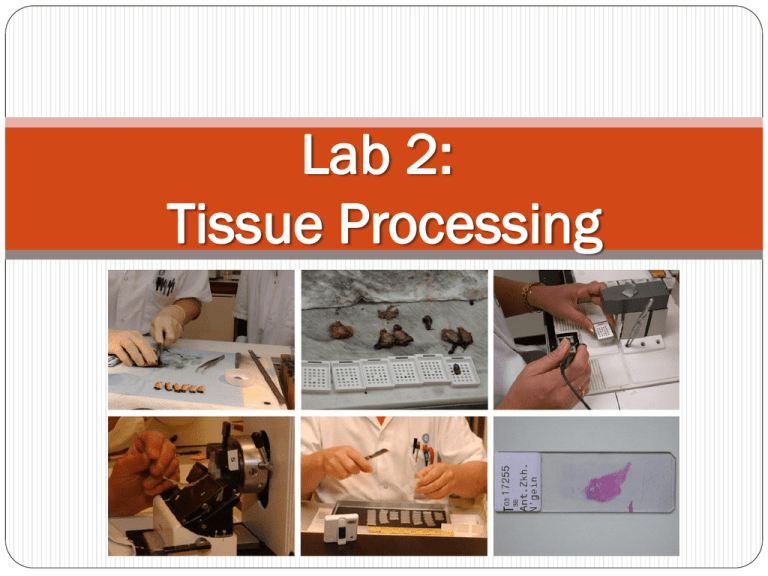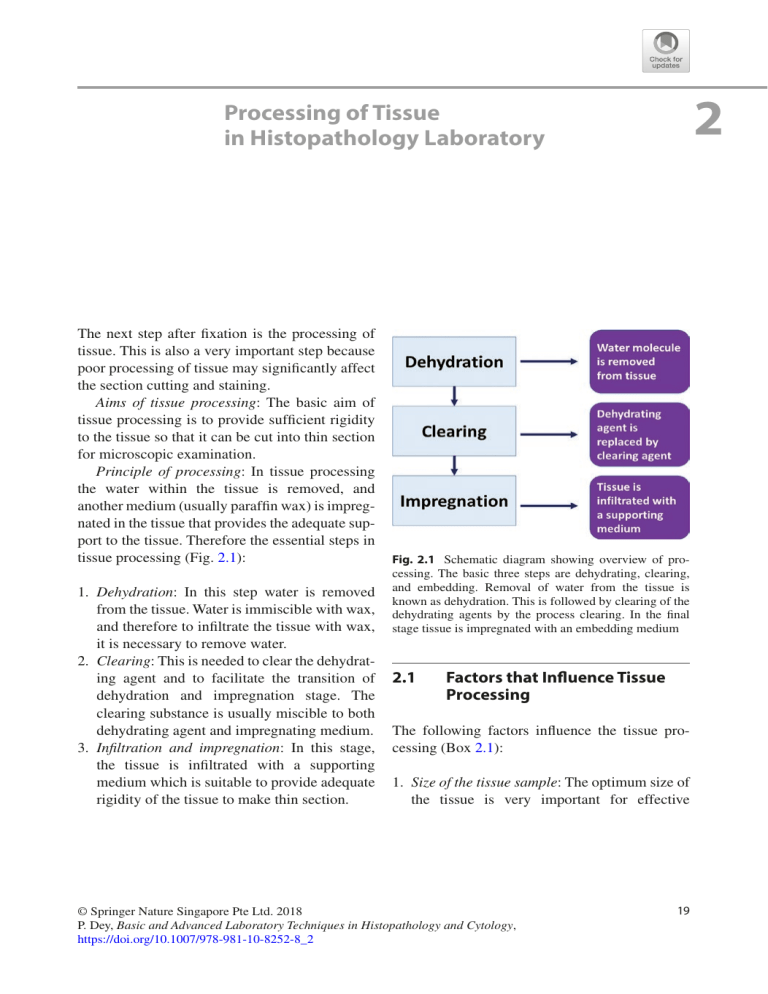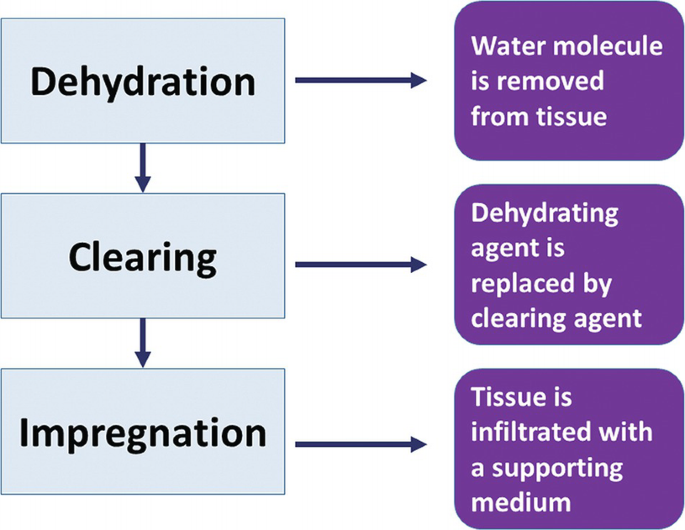Clearing Agent in Tissue Processing
Tissue Processing Embedding. Clearing is an essential step in processing tissue for light microscopy.

Tissue Processing Factors Steps Of Tissue Processing Types Medical Laboratory Scientist Mls
May be used for applications including lipid extraction paraffin infiltration deparaffinization stain removal and coverslipping.

. Dehydration clearing and infiltration. TECHNIQUE OF CLEARING Volume of clearing agent should be 50-100 times the volume of tissue. There are three main steps in tissue processing namely.
Xylene customarily has been used as a clearing agent for routine tissue processing. Epredia Signature Series Clear-Rite 3. Xylene is toxic and therefore a threat to personnel.
Achieve safer more convenient processing staining and coverslipping with Epredia Xylene Substitute. Xylene is the clearing agent used most commonly worldwide. Long-term immersion of tissue in xylene results in tissue distortions.
The most common clearing agent is xylene. Clearing agent is miscible with both dehydrating agent as well as paraffin wax. The time in the.
May be used for applications including lipid extraction paraffin infiltration deparaffinization stain removal and coverslipping. 2 4 Some are generally applicable while others are designed for. In most clinical and research settings tissue processing is accomplished using an automated tissue processor with or without.
Clove oil is an excellent clearing medium but it has the power of extracting certain. Clearing in histopathological tissue processing should be able to make the tissues translucent and clear for the tissues to be visible under light microscopy and should render the clearing agent to be miscible with the dehydrant and the impregnation wax in the preceding and following processing steps. Xylene is a gold standard clearing agent but increasing concerns.
Xylene is toxic and therefore a threat to personnel working in histopathology laboratories. Fluids with a low boiling point are generally more readily replaced. CRITERIA FOR CHOOSING CLEARING AGENTS Rapid removal of dehydrating agent Ease of removal by melting paraffin Minimal tissue damageToxicity Flammability Tim e Cost viscocity Storage Disposal CRITERIA FOR CHOOSING CLEARING AGENTS 18.
However orange oils that are neither pure nor stable can break down to produce compounds that will interfere with staining procedures. Clearing is required to remove alcohol from tissues and is replaced by fluid which is miscible with wax with which tissue must be impregnated. Clearing agents designed for use during tissue processing and staining.
In the final stage shrinkage may result from the extraction of fat by the clearing agent. Tissue processing is the technique by which fixed tissues are made suitable for embedding within a supportive medium such as paraffin and consists of three sequential steps. The main aim of this study is to substitute.
Render complete deparaffinization and clearing during the staining process with Epredia Signature Series Clear-Rite 3. Dehydration clearing and infiltration. Why is the process of removing.
The choice of a clearing agent depends upon the type of tissue processor used the processing conditions such as temperature safety. We evaluated a safer alternative clearing agent for use in the histopathology laboratory. 1 Many tissue clearing methods exist each with different strengths and weaknesses.
Toluene is better at preserving tissue structure and is more tolerant of small amounts of water left behind in the tissues than xylene. Ad With the Revos tissue processor your workflow can experience multiple improvements. Each of the steps of the processing method involves the diffusion of a solution into tissue and dispersion of the previous solution in the series.
Contact your Sales Representative to learn more about our tissue processing solutions. INTRODUCTION Clearing is an essential step in processing tissue for light microscopy. Xylene is one of the common clearing agents used in laboratory but it is also hazardous.
Prolonged exposure to most clearing agents causes the tissue to become brittle. 1 2 3 This allows deep insight into these tissues while preserving spatial resolution. Clearing agent is necessary as the dehydrating agents are not miscible with paraffin.
The boiling point of the clearing agent gives an indication of its speed of replacement by melted paraffin wax. The tissue processing involves many steps of which one of the most important step is Clearing which is a process of replacing dehydrant with a substance which is miscible with embedding medium or paraffin wax. Xylene is the clearing agent used most commonly worldwide.
In most modern institutes and labs tissue. Chromogenic counterstains are used when the primary antibody is visualized using HRP or alkaline phospatase combined with DAB AEC or similar enzyme substrates. Products are available in various quantities.
18004423573 SAME DAY SHIPPING. All the Fun of the Carousel. As xylene is toxic in nature any technique that minimizes the use of xylene by using non-biohazardous.
Order by 12pm CST for same day shipping from coast to coast distribution centers QUALITY GUARANTEED. Clearing agents designed for use during tissue processing and staining. Xylene is reasonably cost effective and works well for short-term clearing of small tissue blocks.
Contact your Sales Representative to learn more about our tissue processing solutions. Xylene is the most popular clearing agent and several changes of it are required to completely displace the ethanol. Products are available in various quantities.
We have monitored TOF using a routine tissue processing protocol TPP when dehydrating tissue in a series of reagent ethanol solutions ranging from 70 to 100 ethanol in water and thereafter tissue clearing in xylene. We compared the morphology of the tissue specimens with the TOF profiles to ensure that high-quality tissue had been generated. Tissue clearing refers to a group of chemical techniques used to turn tissues transparent.
Nuclei and background were counterstained with nuclear fast red. HERE TO HELP Call our friendly Customer Service team with any questions about products or ordering. Viscosity influences the speed of penetration of the clearing agent.
Orange oil-based clearing agents are excellent for preserving fine tissue structure and can often be used in place of xylene with no alteration of protocol. Ad With the Revos tissue processor your workflow can experience multiple improvements. 1 2of2 Results.
Prussian blue iron stain kit staining iron blue in liver tissue.

Tissue Processing Stage Clearing Clearing Agents Youtube

Processing Of Tissue In Histopathology Laboratory

Processing Of Tissue In Histopathology Laboratory Springerlink
No comments for "Clearing Agent in Tissue Processing"
Post a Comment